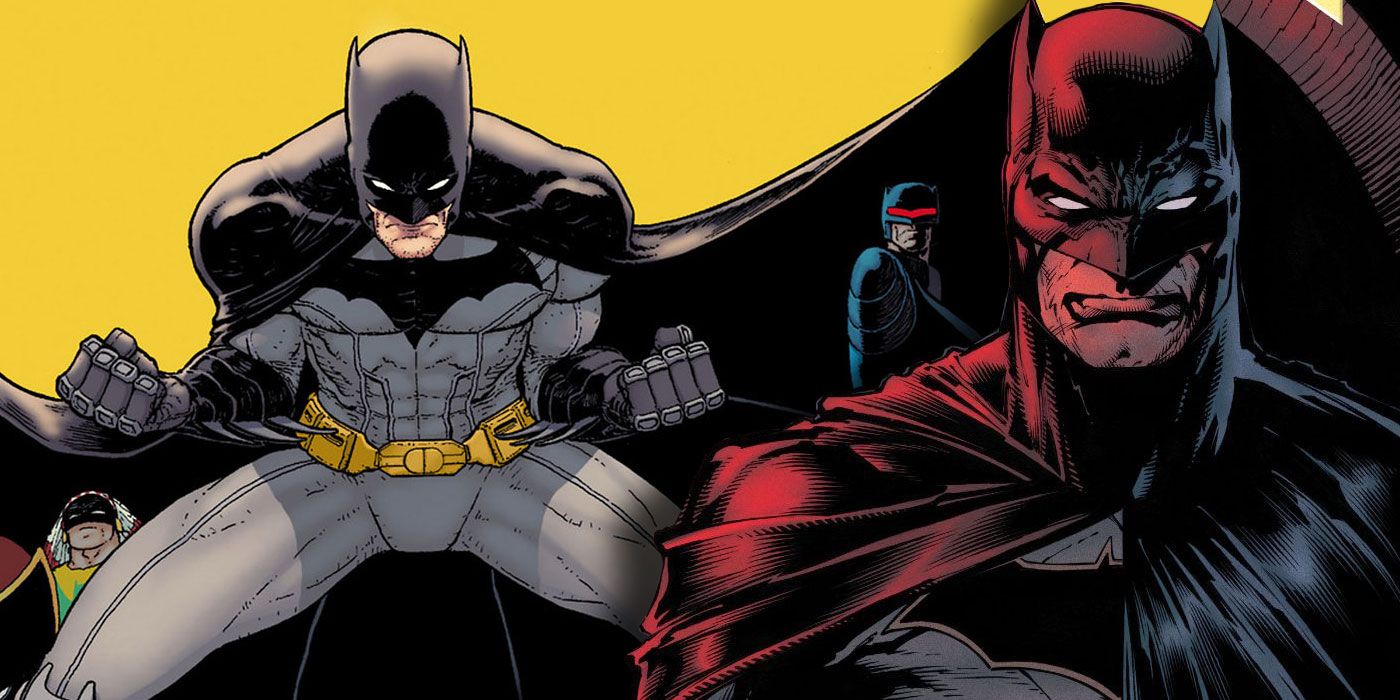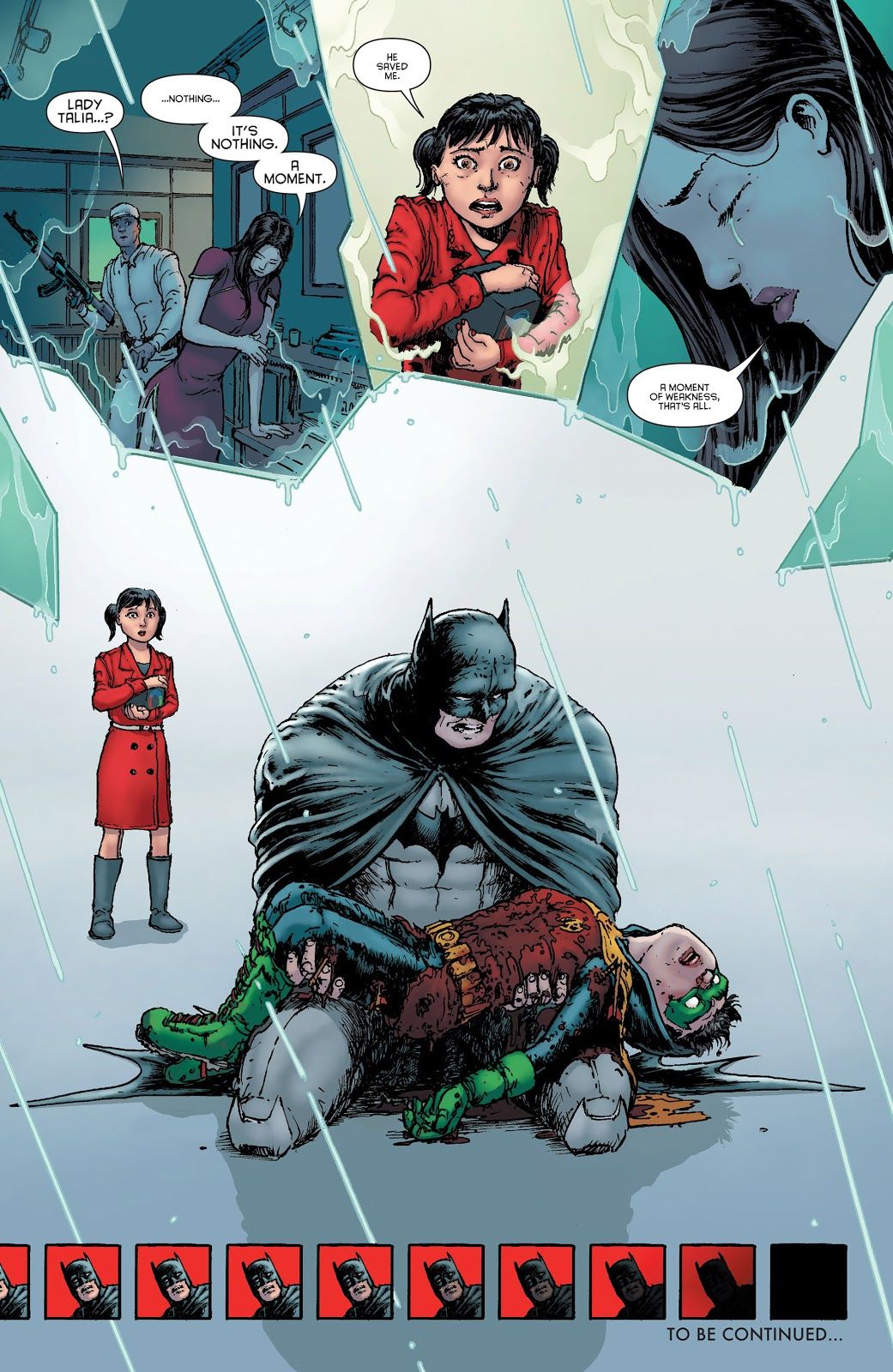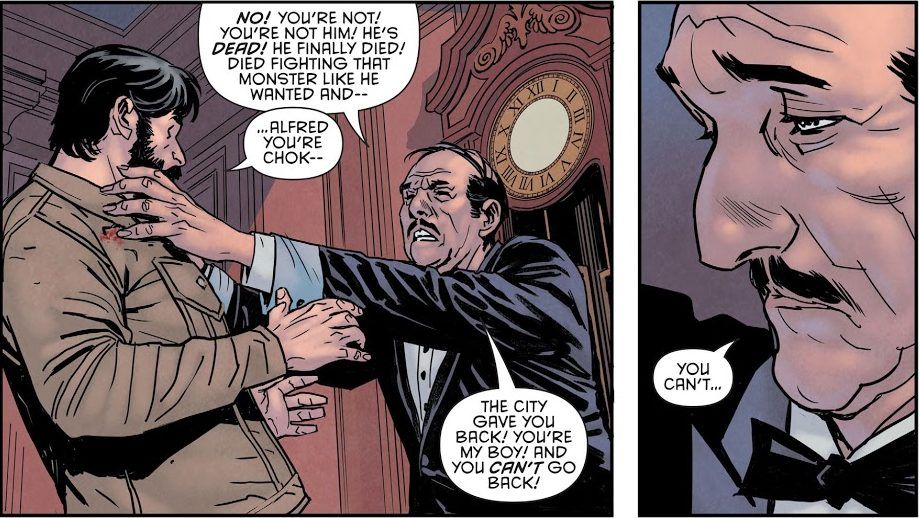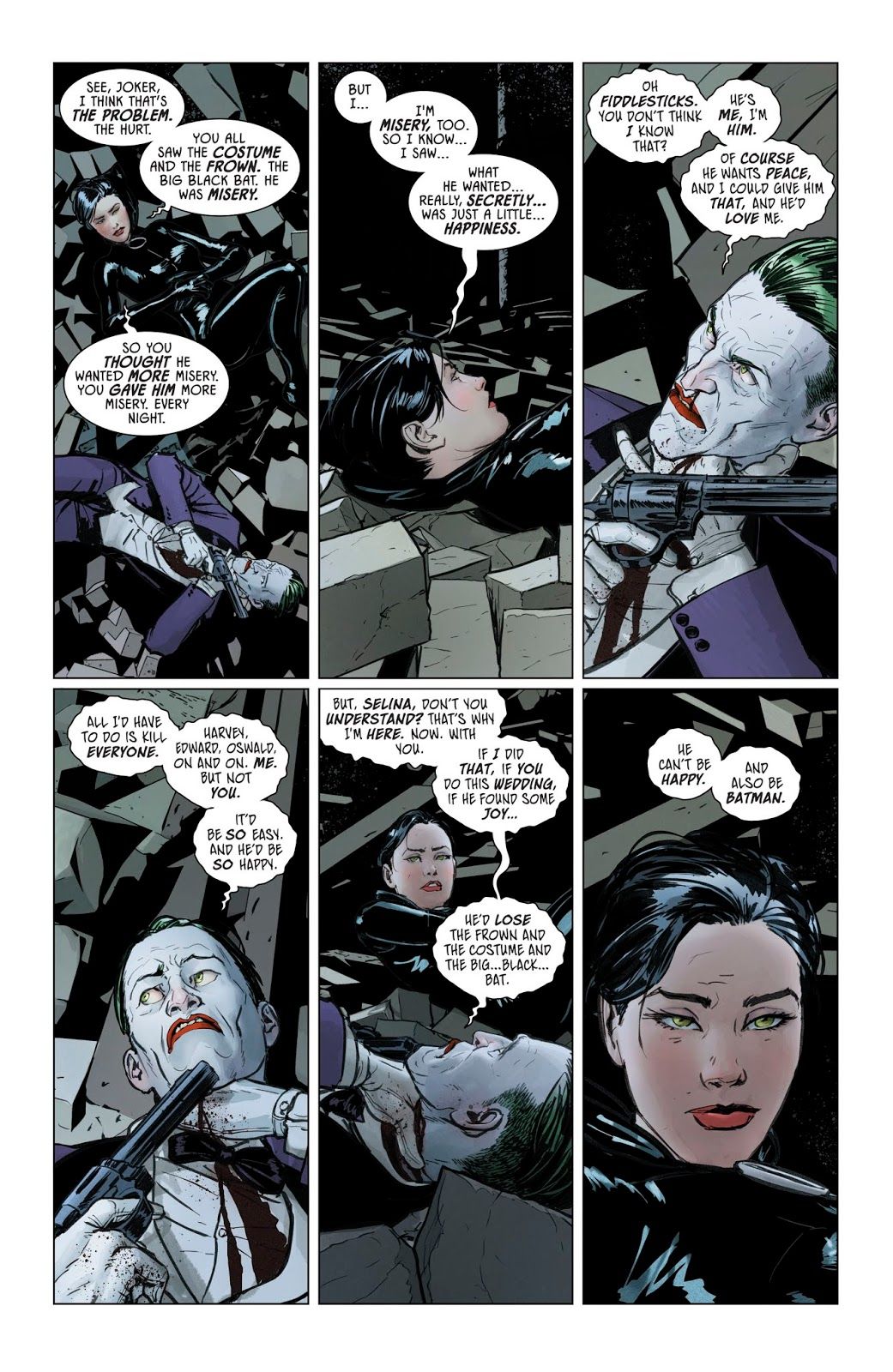Can Batman ever actually be happy? In early incarnations of the character, that was a given. But as the depth of the character’s psyche has been probed, that question has come to the forefront of some of the biggest recent runs on his book. Grant Morrison and Tom King both explored the impact having that much dedication can have on the soul, and the toll it brings to your family. At the end of the day, can Batman every really be happy?
There’s no need to introduce Batman, right? He’s Batman, you’re on CBR, I have confidence that you know who Batman is and what his deal is. What’s worth talking about is how the character has been portrayed in the past decade or so. For the last twelve years, three writers have come to define Batman: Grant Morrison, Scott Snyder and Tom King.
RELATED:Tom King’s Batman Run Is A Spiritual Sequel to Knightfall
Each one was working with a different incarnation of the Dark Knight: Morrison’s run was all about bringing back lost relics of the Silver Age and restructuring them for the 21st century. Then, Snyder went back to (bonkers) basics during the New 52 era, giving us a whole new origin for the character that included dirt bikes and bone monsters. King has been the writer for the book in the Rebirth period, with his projected 100+ issue run currently at the halfway point. All three crafted great runs, and all three committed themselves to examining the impact that being Batman has on a Bruce Wayne.
The Batman Family
Morrison’s run was, at the core of it, about family. His mega-story opened with Bruce Wayne meeting his son, Damian; a ruthless and arrogant killer raised as an assassin by his mother, Talia al Ghul, the young boy was a literal worst nightmare for Batman. But by showing him the meaning of the Bat, Bruce was able to bring his son back from the brink. The teachings of his mother weren’t strong enough to cause him to resist the chance for the boy to become a hero instead of a conqueror. It was Damian’s choice, and it was one Bruce was and remains incredibly proud of.
It’s also a choice that got Damian killed.
He died wearing the Robin red and green, and his mother soon followed, killed by Spyral agent Kathy Kane in direct defiance of Batman. Both Talia and Kathy taunted Bruce for his commitment to a childish fantasy like Batman instead of actually trying to improve himself and the world. In the final issue of Batman Inc. Bruce considers hanging up the costume once and for all, until he finds out Ra’s Al Ghul has stolen the bodies of his family with plans to resurrect them. A despondent Batman goes back into action, because “Batman can never die” – even when he wants to.
RELATED: The Bat Signal: Grant Morrison
Being Batman has allowed Bruce to build a new family for himself to replace the one he lost as a child. But when he got the chance to actually have a family again, he lost them due to the fact they bought into the myth of the Batman. Talia went full super villain because there wasn’t another way to get his attention. Damian just wanted them to be a family together. But because of Bruce’s commitment to being Batman, none of that was able to come true. He lost everything, and had to continue on as Batman.
Page 2: [valnet-url-page page=2 paginated=0 text='Tom%20King%27s%20Batman%20Found%20Love%20-%20But%20Will%20It%20Break%20Him%3F']
Bat and Cat
Scott Snyder’s run on Batman was more concerned with how the character came to be then where he was going, but even that run touched on the subject during the Super Heavy story arc. Following a climatic battle with the Joker, Bruce Wayne woke up with no memory of who he was. All his training, all his skills, all... gone. But that meant all the trauma was gone too. This well-adjusted Bruce worked as a social worker, led a quiet life. He was a different man. He was happy.
But in the end, he accepts the fact that the world needs people like Batman. His memory restored, Bruce sacrificed all of that to go back to being the broken little boy who deals with his grief by dressing up as a bat - a decision that broke Alfred's heart.
Tom King’s run on the series has gone more in-depth regarding the tragedy of being Batman, using his relationship with Catwoman to illustrate how the commitment to being a hero takes a toll on his very soul. In King’s run, Bruce and Selina love each other. There’s no question about their commitment to one another. Their engagement, although destined to fall apart, felt real and loving. They understand one another, on a powerful level that almost no one else could imagine. They made each other happy.
RELATED: DC’s Anti-Batman, Wrath, Deserves a Place Among Gotham’s Rogues
Following a confrontation with the Joker and a final talk with her best friend Holly, Selina decided to leave Bruce and strike out on her own. It was a realization that the world needs someone like Batman, someone who turns their pain into a desire – a dedication – towards helping others. It makes him as impressive as he is. And with the Joker’s words ringing in her head, Selina comes to the conclusion that Bruce needs that tragedy to fuel him. To be happy with Bruce Wayne is to kill Batman, something she just can’t do the world.
The Man Behind The Bat
Batman has had a positive impact on the world, both within the comics and in real life. A dedication to justice that has inspired generations of people to better themselves. But both Morrison and King (and to an extent, Snyder) made it their mission to show how that dedication can weigh on a man. Because at the end of the day, that’s what Bruce Wayne is. Just a man, trying to find purpose in the world. And his dedication to that cause will never end, despite what he wants.
There is no happy ending for Batman. There’s always going to be another villain to punch out, another threat to stop. Crime and pain are neverending, so Batman has to be too.




